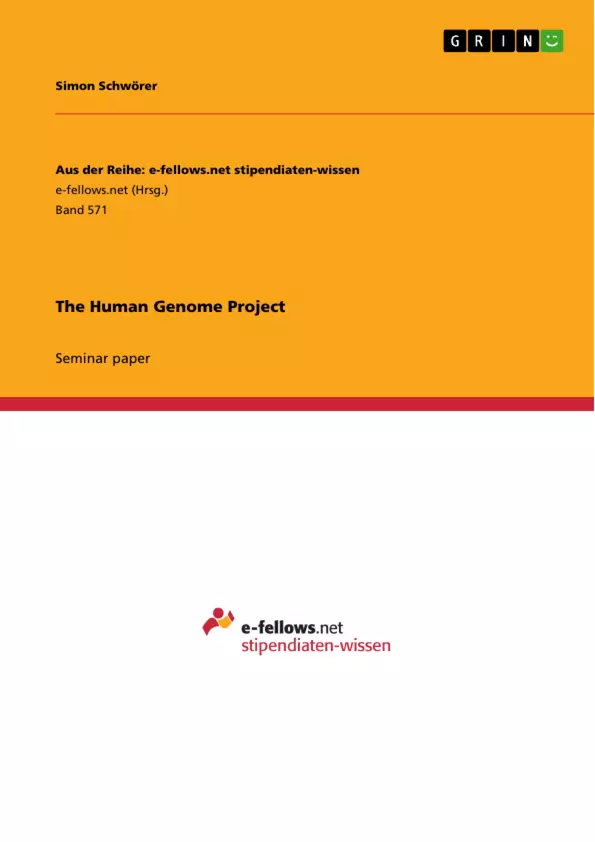The Human Genome Project (HGP), founded in 1990, was a multinational project with the aim to sequence the entire human genome. Besides, its objectives included the generation of high resolution linkage and physical maps of the human chromosomes as well as the identification of disease causing genes. In addition, the HGP’s key goals also included addressing the ethical, legal, and social issues (ELSI) that may arise from the increasing the availability of genetic information, thereby representing the world’s largest bioethical program. This work adresses the most challenging ELSI concerns in detail and gives an overview about the state of research on the human genome.
Inhaltsverzeichnis (Table of Contents)
- The Human Genome Project
- Genetic Determinism
- The Human Genome Project: History
- The Goals of the HGP
- The Achievements of the HGP
- Ethical, Legal and Social Issues (ELSI)
- Genetic Discrimination
- The Dilemma of Genetic Information: Should it be used in Health Insurance?
Zielsetzung und Themenschwerpunkte (Objectives and Key Themes)
This essay examines the Human Genome Project (HGP), its historical development, and its impact on society. It explores the ethical, legal, and social implications of genetic research, particularly concerning genetic determinism and genetic discrimination.
- The history and development of the Human Genome Project
- The ethical, legal, and social implications of genetic research
- Genetic determinism and its potential impact on society
- Genetic discrimination and its implications for individuals and society
- The ethical considerations surrounding the use of genetic information in healthcare and insurance
Zusammenfassung der Kapitel (Chapter Summaries)
This essay explores the historical development of the HGP, highlighting the initial skepticism and eventual success of the project. It then delves into the ethical and social implications of genetic research, particularly focusing on the concept of genetic determinism and its potential consequences for individuals and society. The essay then examines the issue of genetic discrimination, discussing its prevalence and the legal frameworks established to address it. It concludes by discussing the ethical considerations surrounding the use of genetic information in healthcare and insurance, emphasizing the importance of privacy and confidentiality in managing sensitive genetic data.
Schlüsselwörter (Keywords)
The Human Genome Project (HGP), genetic determinism, genetic discrimination, ethical, legal, and social issues (ELSI), genetic testing, genetic information, privacy, confidentiality, health insurance, GINA.
- Arbeit zitieren
- B.Sc. Simon Schwörer (Autor:in), 2012, The Human Genome Project, München, GRIN Verlag, https://www.grin.com/document/204136



